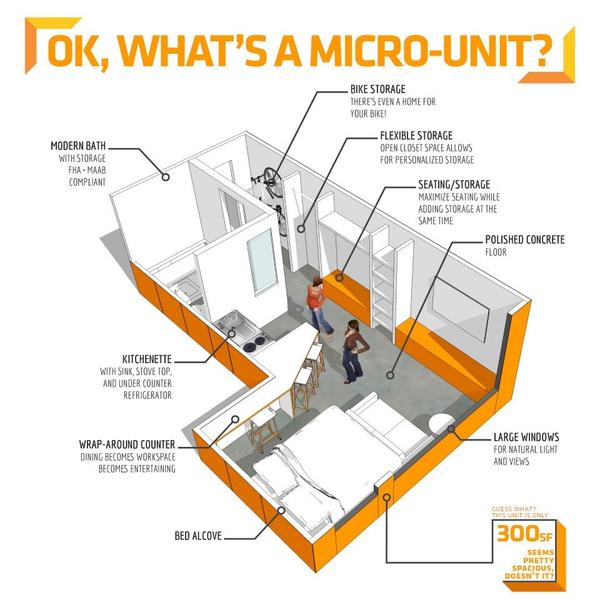We may—or may not—be on the brink of a housing revolution. You may not have noticed yet, but this moment is an opportunity. Whether we seize it is entirely up to us.
It reminds me a bit of the wonderful work by the economist Alexander Field. In his book A Great Leap Forward, he makes the provocative argument that the Great Depression was “the most technologically progressive decade of the century.” In the midst of the worst unemployment, poverty, and homelessness anyone can remember, our economy became 40 percent more productive—an almost unthinkably unprecedented accomplishment.
How can that be?
Well, in the 1930s, inventors gave us the first commercial plane, the first television, the first refrigerator, and the first car with V-8 engines, automatic transmissions, power steering, radios, heaters, and hydraulic breaks. Almost all the major technologies of the postwar boom can be traced back to the Great Depression.
One reason, argues Field, is that “adversity summons reservoirs of initiative and creativity that have long-term positive consequences.” For historians, this argument isn’t as controversial as it seems. Titans of industry like John Rockefeller and Jay Gould cemented their strategic advantage—and their fortune—by buying when everyone else was selling. “You want to be greedy when others are fearful,” said Warren Buffett in the depths of the Great Recession. Sure enough, research published in the Harvard Business Review has shown that the most successful firms after recessions aren’t necessarily the ones who were strongest in good times or the ones who cut costs in bad times—they were the ones who explored new markets and invested in research and development when everyone else was running for the exits.
This finding wouldn’t come as a surprise to psychologists either. The latest research, led by Angela Duckworth at the University of Pennsylvania, shows that the most successful people in school, at work, and on the battlefield are not necessarily the smartest or the strongest or the most charming—they’re the ones who have “grit,” the ones who persist against all odds, who dig deep when everyone else is ready to give up.
That’s where real greatness is made.
It turns out that our parents were right. Adversity builds character. Or as Plato famously said, “a true creator is necessity, which is the mother of our invention.” Faced with such necessity, the inventors of the 1930s created great affordable, reproducible innovations for the masses.
Now, we find ourselves in a housing affordability crisis.
Since the housing bubble popped, Americans have flooded into rental units in the cities, where construction has been increasingly restricted for several decades. The combination of rising demand and dwindling supply has had the effect that any Econ 101 student would predict: Rents are soaring, and incomes aren’t keeping up.
Just like the Great Depression, this is a tremendous tragedy, and with some foresight could have taken steps to reduce its depth. But the crisis is here. We cannot undo the harm that has befallen our fellow Americans. The only thing we can do—indeed, the thing we must do—is to summon those “reservoirs of initiative and creativity” to build a New American Dream without rent burden.
“The only thing we can do—indeed, the thing we must do—is to summon those “reservoirs of initiative and creativity” to build a New American Dream without rent burden.”TWEET THIS
Already, we are beginning to see the sparks of innovation lighting up the firmament of real estate development and architectural design. In Boston and Seattle, micro-apartment complexes are redefining what it means to be efficient with space, minimizing square footage but preserving high-quality amenities. In Denver and Los Angeles, entrepreneurs are catering to residents who value affordability and community over solitude, sharing common areas with their fellow residents in “co-housing” arrangements.

These solutions are not appropriate for everyone—or every neighborhood. Increasing population density without offering sufficient public services such as public transit, for example, can stress a city’s infrastructure and sap valuable time in commuting costs. But every great innovation, from cars to planes to televisions, was controversial at first. Every advance comes at a cost. In times of crisis, we cannot shy away from trying new ideas, with the understanding that we will all benefit from more productive, less divided urban communities in the long run.
Above all, community stakeholders must have the vision to see that now is the time to invest—and the fortitude not to shy away from innovative new construction when their fellow Americans need them the most.
We can all play a part in this transformation, whether we live in these communities or not. When Field investigated the great inventions of the 1930s, he found that “adversity” wasn’t the only necessary ingredient. Public investment was the other crucial catalyst. The New Deal built the roads and the runways and the transmission lines without which those private inventions would never have been accessible or affordable for the vast majority of Americans. We, as citizens, have an opportunity to replicate this success in the crisis of our own time.
This moment of opportunity is one of the reasons that I have partnered with Home Matters in writing these blog posts. Their Design Challenge from last year is a step toward seizing this opportunity. All across our country, architects and developers and urban planners are poised with the skills and the passion to invent a new urban design that preserves our beautiful housing stock while building a more inclusive community for all who come seeking a home.
When necessity has beckoned, generations past have answered the call. Let us heed their example and design a New American Dream that generations to come will look upon and live in with pride.

This article is written by Dr. Raphael Bostic. He is the Judith and John Bedrosian Chair in Governance and the Public Enterprise at the Sol Price School of Public Policy at the University of Southern California.
Photo Credits:
Refrigerator photo courtesy of Orlando Utilities Commission
Micro Apartment sketch from Biz Journal